The world has changed, and so has the idea of retirement.
In 2025, more American expats are packing their bags and moving abroad to start a new life in places that offer a better quality of life, lower cost of living, and universal healthcare systems that simply outperform what they left behind in the U.S.
Once, the conversation revolved around Europe’s Golden Visa schemes — easy paths to permanent residency through property investments.
But that era has ended. Spain officially ended its Golden Visa in April 2025, while Portugal dropped its real estate option two years earlier
Article Update and Competitor A…
. The shift has forced retirees and remote workers alike to rethink their strategy, focusing instead on passive income visas, affordable health insurance, and lifestyle benefits beyond ownership.
Now, European countries like Portugal, Spain, and Italy compete with Central America’s Panama and Costa Rica — each offering unique advantages for American citizens seeking a safe, attractive country to settle in.
Whether you’re drawn to Portugal’s western Europe charm, Panama’s beautiful beaches, or Costa Rica’s relaxed lifestyle, this guide explores the best countries to move to from the USA — where you can find comfort, security, and community while living abroad.
Let’s explore how today’s top destinations compare on quality of life, cost of living, and long-term residency options in this new, post–Golden Visa world.
How to Choose a Retirement Destination
Choosing where to spend your retirement years abroad isn’t only about cost of living or beautiful beaches.
For many American expats, it’s about finding a safe country that offers quality of life, universal healthcare, and easy paths to permanent residency.
Before you decide which European country or Central American paradise best suits your lifestyle, think about these key factors:
1. Lifestyle & Culture Fit
Every country has its rhythm. Some, like Costa Rica, promise a relaxed lifestyle with open-air cafés and rainforest backdrops.
Others — such as Portugal or Italy — blend a rich culture with an active international community. Consider your pace, the local customs, and potential cultural differences before committing to your new life.
2. Language and Integration
A language barrier can shape your day-to-day comfort more than you expect.
While English is widely spoken in major cities like Lisbon, Barcelona, and Panama City, learning the basics of the local language will enhance your integration and help you feel truly at home living abroad.
3. Visa and Residency Options
After the end of Golden Visa schemes, most European countries now focus on passive income or digital nomad visas for American citizens.
Portugal’s D7, Spain’s Non-Lucrative, and Italy’s Elective Residency Visa are among the easiest countries to gain long-term residence without a minimum investment.
4. Healthcare Access
For retirees, access to a universal healthcare system can be a dealmaker.
Western Europe leads in this category, but Central America also provides affordable health insurance options. Portugal, France, and Spain offer excellent public coverage, while Costa Rica’s Caja system ensures every legal resident is protected.
5. Financial and Tax Planning
Understanding local tax rates, bank deposits, and bilateral tax agreements can help you avoid costly mistakes.
Countries with a territorial tax system, like Panama and Costa Rica, don’t tax income earned abroad — an advantage for retirees depending on U.S.-based pensions.
Quick Compare: Top 10 Retirement Countries (2025)
Before diving deeper into each destination, here’s a quick overview of the best countries to retire to from the USA.
The table below summarizes visa options, typical cost of living, healthcare access, and lifestyle notes for the top destinations in Western Europe and Central America.
The Top 10 Retirement Countries in Detail
Portugal remains one of the best countries in Europe for American citizens to retire.
The D7 visa requires proof of passive income (around €870 per month in 2025) and offers a clear route to permanent residency.
Portugal’s universal healthcare system (SNS) provides excellent coverage at low costs, and English is widely spoken in major cities like Lisbon and Porto.
Combined with its mild winters, beautiful beaches along the Mediterranean Sea, and welcoming international community, Portugal offers one of the world’s best quality of life scores for retirees.
Spain’s Non-Lucrative Visa (NLV) is the most common path for American expats after the end of the Golden Visa scheme.
The visa requires proof of stable income (roughly €2,400 per month) and includes access to Spain’s universal healthcare system. Spain combines the vibrant lifestyle of Western Europe with affordable housing, excellent education systems, and a rich cultural scene.
Retirees can enjoy major cities like Valencia or Málaga, or settle in smaller coastal towns for a more relaxed lifestyle.
Over time, residents can even apply for Spanish citizenship after meeting residency requirements.
Italy’s Elective Residency Visa appeals to retirees seeking culture, food, and history. Applicants must show sufficient funds (around €31,000 yearly) and private health insurance for the first year.
Once established, retirees gain access to Italy’s universal healthcare system and can apply for permanent residency later. Italy’s quality of life ranking remains high thanks to its rich culture, strong education system, and excellent health care.
Regions like Tuscany and Sicily provide a slower pace and lower cost of living than major cities such as Milan or Rome.
This small European Union nation offers one of the easiest residence programs for American citizens through its Global Residence Program.
English is an official language, and health care follows EU standards with both public and private options. Retirees benefit from favorable tax rates and the opportunity to obtain permanent residence.
Despite its size, Malta’s international schools, large expat community, and sunny climate make it an attractive option for those seeking easy access to the rest of Europe.
Greece’s Financially Independent Resident Visa is perfect for retirees with reliable passive income.
The visa requires proof of at least €2,000 monthly income, allowing access to Greece’s public health system (EOPYY). The relaxed lifestyle along the Aegean coast, beautiful beaches, and rich culture continue to attract American expats looking for a peaceful European country.
The cost of living in smaller towns remains low cost compared to much of Western Europe, while major cities like Athens and Thessaloniki offer cultural depth and connectivity.
Panama is consistently rated among the best countries to move to from the USA.
The Pensionado Visa remains one of the most straightforward paths for retirees — requiring a lifetime pension of $1,000 per month. As a Central American country with a dollarized economy, Panama offers affordability, modern infrastructure, and top-tier hospitals.
Its universal healthcare access (through public and private options) and large expat community make integration easy. Many American expats choose Panama City for its urban conveniences, while Boquete and Coronado appeal to those seeking nature and mild winters.
Known for its “Pura Vida” philosophy, Costa Rica’s Pensionado and Rentista visas are popular among retirees and digital nomads.
The Caja public health system provides affordable, universal healthcare, while private insurance remains optional.
The cost of living is lower than in many countries of Western Europe, and American expats appreciate its outdoor activities, warmer climate, and beautiful beaches. The country’s strong environmental policies and safe country reputation make it an attractive option for long-term living.
Mexico continues to attract retirees for its proximity to the U.S. and low cost of living.
The Temporary Resident Visa requires proof of monthly income (around $3,200, though it varies by consulate) and grants access to public or private health care through IMSS.
American expats love its rich culture, friendly locals, and easy flights home.
Major cities like Mérida, Querétaro, and Puerto Vallarta have thriving international communities, making Mexico one of the best countries for American citizens looking to start a new life abroad.
Thailand’s Retirement O and O-A visas are favorites among retirees drawn to Asia’s affordability.
The government requires savings of about ฿800,000 (≈$22,000) and private health insurance.
Digital nomads and remote workers can also apply for Thailand’s Long-Term Visa, designed for foreigners seeking better quality living at lower cost.
Major cities like Chiang Mai and Bangkok offer excellent hospitals and modern amenities, while islands like Phuket promise a relaxed lifestyle and beautiful beaches.
Malaysia’s MM2H program (Malaysia My Second Home) is one of Asia’s most attractive options for retirees.
It requires proof of income (about MYR 40,000 per month) but offers permanent residence potential and excellent education systems for families relocating together.
American expats praise its excellent hospitals, English-speaking doctors, and great quality infrastructure. Kuala Lumpur and Penang are popular for their low costs, international schools, and vibrant culture. Overall, Malaysia combines modern comforts with easy access to the rest of South Asia.
Top 10 Retirement Countries: In Dept Review
Portugal
Portugal consistently ranks among the best countries to retire for U.S. citizens thanks to its warm climate, low cost of living, and friendly visa options.
The D7 Passive Income Visa is the top choice for retirees, requiring proof of a stable monthly income of around €870 and savings of roughly €10,000.
This visa offers a clear path to permanent residency and even EU citizenship after five years.
Living costs remain relatively affordable — a couple can live comfortably on €1,800–€2,300 per month, especially outside Lisbon and Porto. Portugal’s public healthcare system is ranked among the best in Europe, while private insurance plans remain inexpensive.
The country also has a Totalization Agreement with the United States, helping retirees avoid double taxation on Social Security income.
Beyond finances, retirees appreciate Portugal’s relaxed pace of life, stunning coastlines, and safety.
Towns like Cascais, Lagos, and Coimbra offer charming atmospheres and strong English-speaking communities.
Spain
Spain continues to rank among the best countries to retire to for U.S. citizens, thanks to its Mediterranean lifestyle, excellent healthcare, and vibrant cultural scene. The country offers everything retirees could want—beautiful beaches, mild winters, and an affordable cost of living compared to other Western European destinations.
For Americans, Spain’s Golden Visa scheme and Non-Lucrative Visa are the two main paths to residency. The Golden Visa allows investors to gain permanent residency through real estate investments starting from €500,000, while the Non-Lucrative Visa suits retirees with passive income. Both options give access to Spain’s universal healthcare system and the wider European Union.
Spain also has a strong education system, world-class infrastructure, and an ever-growing international community. Many expats settle in coastal areas like Costa del Sol or Valencia, while others enjoy life in vibrant major cities like Madrid and Barcelona. The quality of life here is hard to beat—retirees enjoy outdoor activities, fresh Mediterranean cuisine, and a relaxed pace of living that makes every day feel like a holiday.
With its rich culture, safe environment, and warm, welcoming locals, Spain remains an attractive country for American expats seeking a new life abroad.
Italy
Italy remains one of the most beloved retirement destinations for U.S. citizens seeking beauty, history, and culture at every turn.
From the vineyards of Tuscany to the seaside villages of Sicily, it offers an unmatched lifestyle — art, cuisine, and community — balanced by a slower pace of life.
The main pathway for retirees is the Elective Residency Visa (ERV), designed for individuals with a stable passive income (minimum around €31,000 per year for a single applicant).
Applicants must demonstrate proof of financial self-sufficiency, accommodation, and private health insurance before arrival. Once legally resident, retirees can access Italy’s public healthcare system (Servizio Sanitario Nazionale – SSN), which is both affordable and highly regarded across Europe.
Cost of living varies sharply between regions — Northern Italy tends to be more expensive (particularly Milan, Florence, and Rome), while the southern regions and smaller towns remain surprisingly affordable.
Monthly expenses for a couple average $2,500–$3,500, depending on location and lifestyle. Importantly, Italy and the U.S. have a Social Security Totalization Agreement, preventing double contributions and simplifying pension transfers.
For retirees who prioritize culture, world-class healthcare, and access to other EU destinations, Italy remains a deeply rewarding — if sometimes bureaucratic — place to call home.
Greece
Greece has quickly become one of the best countries to retire to from the USA, offering a mix of low cost of living, Mediterranean climate, and access to the European Union through its popular Golden Visa scheme.
American expats are drawn to its slower pace, beautiful beaches, and affordable housing—especially compared to Western Europe.
The Greece Golden Visa remains one of the most flexible residency programs in Europe. With a minimum investment of €250,000 to €400,000 depending on the region, retirees can gain permanent residency that also covers family members.
The process is straightforward, and holders enjoy visa-free travel throughout the Schengen Area.
For those not seeking investment routes, retirees can also move via long-term visas or digital nomad visas if they plan to work remotely. Healthcare is solid in major cities like Athens and Thessaloniki, and private health insurance plans are inexpensive.
The average couple can live comfortably on $2,000–$2,800 per month, making Greece one of the most affordable and attractive options in Europe for retirees.
With its welcoming international community, rich culture, and relaxed lifestyle, Greece stands out as a safe country to start a new life abroad while staying close to other European destinations.
Malta
Malta has become one of the best countries for American expats seeking permanent residency in a small yet vibrant European country with English as an official language.
This island nation in the Mediterranean Sea offers a high quality of life, mild winters, and a tax-friendly system that appeals to both retirees and digital nomads.
For retirees, the Malta Permanent Residence Programme (MPRP) allows non-EU citizens to settle in the country by making a minimum investment in property or government contributions.
Alternatively, those earning passive income can apply for the Global Residence Programme, which provides a tax rate as low as 15% on foreign income remitted to Malta.
Malta’s universal healthcare system is ranked among Europe’s best, and residents also have access to excellent private clinics. The international community is strong—many expats from the U.S., U.K., and other countries call Malta home.
With an average monthly budget of $2,800–$3,500, retirees can enjoy sea-view apartments, outdoor activities year-round, and easy access to Italy and mainland Europe.
Malta’s blend of Mediterranean culture, safety, and attractive residency programs make it an ideal country for retirees who want a new life abroad without the language barrier or extreme costs of Western Europe.
Costa Rica
Costa Rica is often ranked among the best countries to retire abroad thanks to its tropical beauty, stable democracy, and strong commitment to sustainability.
For U.S. citizens, it’s an easy and welcoming place to settle — English is widely spoken, healthcare is affordable, and residents enjoy a laid-back lifestyle that blends nature, community, and well-being.
The country offers several visa options for retirees, the most popular being the Pensionado Program, which requires proof of a lifetime pension of at least $1,000 per month.
There’s also the Rentista Visa, for those without a pension but with stable income or savings. After living in Costa Rica for three years under these visas, retirees can apply for permanent residency.
One of Costa Rica’s biggest draws is its affordable healthcare system. The national health service, Caja Costarricense de Seguro Social (CCSS), provides quality care for a fraction of U.S. prices, while private clinics offer excellent options for faster appointments.
The cost of living is moderate, with many retirees living comfortably on $2,000–$2,500 per month in areas like Atenas, Grecia, or Tamarindo.
From rainforests and volcanoes to beautiful coastlines, Costa Rica offers a high quality of life and natural beauty that make it an ideal destination for retirees seeking peace and balance.
Panama
Panama has long been a favorite among American expats seeking a low cost of living, stable economy, and straightforward residency options. It’s one of the best countries to move to from the USA if you’re looking for warm weather, modern infrastructure, and a familiar international community.
The Panama Pensionado Visa is one of the most attractive retirement programs in the world. Retirees only need to show a monthly pension of at least $1,000 to qualify, making it accessible and affordable.
This visa provides permanent residency, significant tax breaks, and discounts on healthcare, entertainment, and even flights.
Panama City is a bustling urban hub with skyscrapers and world-class hospitals, while towns like Boquete and Coronado attract retirees who prefer a cooler or more coastal setting. The country uses the U.S. dollar, making financial management easy for American retirees.
Healthcare quality is strong and costs are among the lowest in the Americas. Combine that with year-round warmth, English-friendly locals, and a relaxed lifestyle, and you get one of the most popular destinations for retiring abroad.
Mexico
Mexico remains one of the best countries to retire for U.S. citizens, thanks to its proximity to the United States, low cost of living, and warm climate year-round. Many American retirees are drawn to its vibrant culture, affordable healthcare, and relaxed lifestyle, making it one of the most popular retirement destinations in the world.
The country offers straightforward residency options, including the Temporary Resident Visa and Permanent Resident Visa, both of which can be obtained through proof of income or savings.
These visas allow retirees to live comfortably without needing to invest large sums, unlike European Golden Visa programs.
Mexico’s cost of living is among the lowest in North America. Retirees can live well on a modest budget—especially in cities like Mérida, Puerto Vallarta, and San Miguel de Allende, where English is commonly spoken, and expat communities thrive.
Healthcare in Mexico is high-quality and affordable, with private hospitals often matching U.S. standards at a fraction of the cost.
Combined with beautiful beaches, rich cuisine, and a welcoming population, Mexico offers a balanced lifestyle that’s hard to find elsewhere.
Malaysia
Malaysia has quietly become one of the best countries to retire for U.S. citizens, especially for those looking for an affordable and modern lifestyle in Asia. Known for its tropical climate, friendly locals, and excellent healthcare, Malaysia offers retirees a comfortable and culturally rich environment at a fraction of Western costs.
The country’s long-running Malaysia My Second Home (MM2H) program is a major draw. It allows foreign retirees to obtain long-term residency by showing proof of liquid assets and monthly income.
While requirements vary by region, Malaysia remains one of the most accessible residency programs in Asia for retirees seeking stability and freedom.
Cities like Kuala Lumpur and Penang offer high-quality medical care, modern infrastructure, and English-speaking professionals. The cost of living is significantly lower than in Europe or North America, with affordable housing, local transportation, and dining options.
Malaysia also boasts diverse natural beauty, from beaches and rainforests to mountain retreats.
Its strong expat community and welcoming culture make it easy for newcomers to adapt quickly while enjoying the best of Southeast Asia’s lifestyle.
Thailand
Thailand is often listed among the best countries to retire for U.S. citizens, particularly for those seeking affordable living, tropical beauty, and modern conveniences. From the beaches of Phuket to the mountain air of Chiang Mai, retirees enjoy a balance between nature, comfort, and cultural charm.
One of Thailand’s biggest advantages is the Retirement Visa (Non-Immigrant O-A and O-X), which allows foreigners aged 50 and over to live in the country long-term, provided they meet income or savings requirements.
The process is relatively simple, and renewals are straightforward with proper documentation.
The cost of living in Thailand remains low — housing, dining, and transportation cost far less than in most Western countries. Combined with high-quality private healthcare, often accredited by international standards, retirees can live comfortably on a modest budget.
Thailand’s expat community is one of the most active in Asia, offering strong social networks and English-friendly services in major cities. However, some rural areas still present language barriers, and the tropical humidity can take time to adjust to.
Tips for Choosing the Right Country
Finding the best country to retire to as a U.S. citizen isn’t just about sunshine and beaches — it’s about balance. What feels like paradise for one person may be impractical for another.
The key is matching your lifestyle goals with the country’s visa rules, healthcare system, cost of living, and culture.
Consider Your Budget and Cost of Living
Before making any move, create a clear picture of your monthly living costs — housing, food, healthcare, and travel. Countries like Mexico, Thailand, and Malaysia offer luxury living on a modest budget, while Portugal or Spain provide Western comfort at a slightly higher price.
If your retirement income comes from U.S. savings, pensions, or Social Security, focus on countries with favorable currency exchange rates and low tax obligations for expats.
Evaluate Healthcare Quality and Access
Healthcare is one of the most important aspects of retiring abroad. Look for destinations with affordable, high-quality private healthcare systems, such as Portugal, Costa Rica, and Malaysia.
Many retirees even maintain international health insurance for peace of mind while abroad.
Research Residency and Visa Requirements
Some countries make retirement visas easy to obtain — for example, Mexico’s income-based visa or Thailand’s retirement visa. Others, like Portugal or Greece, may require investment-based residency programs such as the Golden Visa.
Make sure you understand what’s required before applying, including financial thresholds, renewal terms, and minimum stay requirements.
Prioritize Safety and Stability
Safety should always be a top priority. Review each country’s crime rates, political climate, and overall peace index.
Nations such as Portugal, Malta, and Spain consistently rank high for personal safety and political stability.
Think About Lifestyle and Culture
Finally, ask yourself: What kind of life do I want to live every day?
If you love beaches and warm weather, Thailand or Costa Rica may be ideal. If you prefer café culture, architecture, and European charm, Italy, Greece, or Spain might suit you better.
Choosing the right retirement destination isn’t about chasing trends — it’s about creating a sustainable, fulfilling lifestyle that matches your financial comfort and emotional needs.
How to Apply for a Retirement Visa
Applying for a retirement visa may sound complex, but most countries follow a similar structure. Whether you plan to move to Portugal, Mexico, Thailand, or Malaysia, the process generally involves proving your financial stability, good health, and clean criminal record.
Below is a visual, step-by-step breakdown of the retirement visa application process:
How to Apply for a Retirement Visa (Detailed Overview)
Applying for a retirement visa takes planning, patience, and good organization. While every country adds its own twist, the process follows a universal rhythm — eligibility, documentation, submission, and settlement.
Here’s what each step really involves:
Verify Eligibility and Choose Your Destination
Before you fall in love with a place, make sure you actually qualify to live there.
Most retirement visas are designed for non-working residents, meaning your income must come from pensions, savings, or other passive sources — not local employment.
Countries like Portugal and Spain focus on proof of financial self-sufficiency, while others such as Panama and Costa Rica are more flexible, rewarding retirees who can demonstrate steady monthly income or guaranteed pensions.
It’s smart to compare healthcare systems, taxation treaties, safety levels, and cost of living before committing.
The “cheapest” option on paper can sometimes mean more red tape or limited healthcare coverage later.
Calculate Financial Requirements
Every retirement visa program sets a minimum income threshold, usually tied to local cost-of-living standards.
- In Spain, retirees need around €2,400/month in income (plus about €600 for each dependent).
- In Panama, you’ll need at least $1,000/month in lifetime pension income.
- Thailand allows retirees to show either $24,000 in annual income or $80,000 in savings.
It’s not just about showing money — it’s about proving financial stability. Expect to provide bank statements, pension letters, and sometimes investment account summaries covering at least 6–12 months.
Prepare and Legalize Your Documents
This is the most time-consuming step — and where many applicants make mistakes. Your documents must be legalized (apostilled or authenticated) and often translated into the host country’s language.
Expect to prepare:
- A valid passport (with at least six months’ validity),
- Proof of income or savings,
- Clean criminal background check,
- Medical certificate, and
- Proof of health insurance.
Start collecting early — apostilles and translations can take weeks, especially if you’ve lived in multiple countries.
Submit Your Application
Once your documents are ready, submit them to the embassy or consulate of your chosen country. Some, like Portugal and Spain, require applications to be filed in your home country before you travel.
Others — including Panama and Thailand — let you apply or finalize your visa after arriving on a temporary entry visa.
Always double-check your consulate’s instructions. Even within one country, consular offices may have slightly different requirements (especially regarding income proof or document formats).
Pay the Applicable Fees
Application fees are usually modest — from €80 to €150 for most European countries, while others such as Panama charge for both visa processing and attorney services.
In some destinations, you’ll also pay for medical checks, translations, and residence cards separately.
Pro tip: keep a digital and physical copy of every receipt. These are often required again when registering your residence or renewing your visa.
Wait for Processing
Patience is key here. Processing times can range from four weeks to three months, depending on the country.
You’ll usually receive an email or call from the consulate once your visa is ready for pickup.
If you’re approved, you may receive:
- A long-stay visa (allowing entry and residency registration), or
- A temporary residence permit, which can later be renewed or upgraded to permanent status.
Travel and Register Locally
Once your visa is approved, you can enter the country and register your residence. This part is often overlooked, but it’s critical.
In Spain, you must apply for your Foreigner ID Card (TIE) within 30 days of arrival.
In Portugal, you’ll attend a short appointment at SEF (Serviço de Estrangeiros e Fronteiras) to receive your residence card.
If you’re moving to Latin America, like Panama or Costa Rica, your lawyer or relocation consultant often handles these steps locally for you.
Renew or Convert Your Visa
Most retirement visas start as temporary residency, but can evolve into permanent status after two to five years of continuous living.
- Spain’s Non-Lucrative Visa renews every two years.
- Portugal’s D7 Visa converts into permanent residency after five.
- Panama’s Pensionado Visa gives permanent residency immediately — one of its biggest perks.
Keeping your documents and taxes up to date is essential. Missing renewals can reset your residency timeline, which could delay your eligibility for citizenship later on.
Documents You’ll Need to Prepare
Once you’ve chosen your destination and confirmed you qualify, it’s time to gather the necessary paperwork. The required documents for a retirement visa are generally the same worldwide — but each country has its quirks.
Here’s what you’ll need to prepare before submitting your application:
How to Handle the Documents Properly
Start Early and Verify Requiremen
Every embassy updates its checklist at least once a year.
Before collecting anything, visit the official consulate website or confirm requirements by email.Documents like background checks or medical certificates usually expire within 90 days — meaning if you collect them too soon, you’ll have to redo them.
A smart rule: start gathering financial and civil documents first, and leave health and police records for last.
Proof of Identity — Your Passport
A valid passport is the cornerstone. It should have at least six months of validity beyond your planned stay and at least two blank visa pages.
If your passport will expire soon, renew it before starting the process. Some consulates even require a notarized color copy in addition to the original.
Financial Documentation
This is the section consulates review most carefully.
You must show consistent, legitimate income that meets your target country’s threshold.
Examples:
- Spain and Portugal: bank statements and pension slips for the last six to twelve months.
- Panama: an official pension certificate or notarized letter from your pension provider.
- Thailand: a combination of bank savings and monthly transfers.
Include translations, apostilles, and bank seals where required. Avoid large unexplained deposits — they can delay approval.
Criminal Background Check
Issued by your home country (and sometimes any country you’ve lived in), this document proves you have a clean record. It must be apostilled for international use and translated into the host country’s language.
The certificate is usually valid for three to six months, so timing matters. For U.S. citizens, the FBI Identity History Summary is accepted almost everywhere, but some countries also require state-level checks.
Health Insurance and Medical Certificate
Retirement visas are meant for long stays, so you’ll need to prove you won’t burden the local healthcare system.
Most countries require:
- Private or public health insurance that covers hospitalization in your destination, and
- A medical certificate confirming you’re in good health and free from infectious diseases.
The certificate must come from a licensed doctor and often includes a statement that you’re “fit to travel and reside abroad.”
In some countries (like Portugal and Thailand), this letter must be issued within 90 days of the application date.
Proof of Accommodation
Authorities want to know where you’ll live. You can submit:
- A lease contract,
- Hotel reservation, or
- A property deed if you already own a home.
In countries like Spain or Italy, the address listed here determines which local office will handle your residency registration later, so be precise.
Proof of Civil Status
This applies if you’re married, divorced, or applying with dependents.
You’ll need marriage or birth certificates — and sometimes divorce decrees — all apostilled and officially translated.
If your documents were issued decades ago, request new certified copies, since embassies rarely accept originals older than six months.
Passport-Sized Photos
Simple, but easy to overlook. Each embassy sets its own specifications — typically 3.5 × 4.5 cm, with a white background and a neutral expression.Bring extra copies for your residence card or immigration registration later.
Apostilles and Translations
Every non-local document must be apostilled or legalized, depending on whether your country is part of the Hague Convention.
Then, it must be translated by a sworn or certified translator in the official language of your new country (Portuguese, Spanish, Italian, Thai, etc.).
Embassies often reject machine translations, so using a professional translator is worth it.
Tip: keep digital copies of both the original and the translation — they’ll come in handy for renewals.
Organize Your Application Packet
Before submission, place your documents in the same order as the consulate’s checklist.Use clear folders or separators with labels like Passport, Income, Insurance, Criminal Record, etc.
Many embassies won’t allow staples, so use paper clips instead.Having a well-organized packet signals professionalism and often speeds up review time.
Costs and Fees of Retiring Abroad
Retiring abroad isn’t just about finding the perfect beach or peaceful village — it’s about understanding the real cost of living and legal residency.
From visa fees to renewal costs and insurance premiums, it’s important to budget realistically before making the move.
Here’s how the typical retirement visa expenses break down across major destinations in 2025:
Important Notes
- Translation & Legalization Fees: Apostilles and sworn translations can easily add €300–€500 per application in Europe.
- Health Insurance: A must-have. Private coverage averages €400–€1,000/year depending on age and destination.
- Lawyer or Relocation Support: In Latin America and Southern Europe, many retirees hire local attorneys for $500–$1,500 to manage submissions.
- Renewal Costs: Some visas (like Spain’s and Portugal’s) require proof of continuous income and clean records with every renewal.
Taxes and Financial Considerations When Retiring Abroad
Many retirees assume that moving abroad means leaving taxes behind — but that’s rarely true.If you’re a U.S. citizen, your tax obligations continue no matter where you live.
Understanding how your foreign income, pensions, and Social Security are treated can prevent costly surprises.
Your U.S. Tax Responsibilities Abroad
All U.S. citizens and green card holders must file a federal tax return every year if their income meets the IRS threshold — even if that income comes from outside the U.S.
This includes Social Security benefits, pension payments, annuities, rental income, and investment returns.
The IRS allows two major tools to prevent being taxed twice:
- Foreign Tax Credit (FTC): Lets you claim a dollar-for-dollar credit for taxes you’ve already paid to another country.
- Foreign Earned Income Exclusion (FEIE): Applies mainly to income from work or self-employment abroad — not pensions or Social Security.
So, for most retirees living on passive income, the FTC is the key mechanism for avoiding double taxation.
Totalization Agreements — Avoiding Double Social Security Payments
The U.S. has entered into Social Security Totalization Agreements with select countries to prevent paying contributions twice.
These treaties decide which country’s system you’ll contribute to — and often allow your years worked in both countries to count toward benefits.
✅ Countries with a U.S. Totalization Agreement (as of 2025):
Portugal, Spain, France, Greece, and Italy — all top destinations for retirees.
❌ Countries without a U.S. Totalization Agreement:
Panama, Mexico, Costa Rica, Thailand, and Malaysia — which means if you take local employment or freelance, you could owe both U.S. and local social security taxes.
For retirees living solely on pensions or savings, this usually won’t apply, but it’s crucial for those considering part-time work or consulting.
Tax Treaties and Double-Taxation Relief
Many popular retirement destinations have bilateral tax treaties with the U.S., ensuring income isn’t taxed twice.Here’s a simplified view of how key destinations treat U.S. retirees:
Healthcare and Insurance Options for Retirees Abroad
When choosing where to retire, healthcare access is just as important as climate or cost of living.
Most popular retirement destinations, including Portugal, Spain, and Italy, provide excellent public healthcare once you’ve established legal residency, often at a fraction of U.S. costs. Others, like Thailand, Mexico, and Malaysia, rely more on private medical systems, offering affordable, high-quality care through modern hospitals and English-speaking doctors.
Many retirees choose a hybrid approach, combining national healthcare for routine services with private or international insurance for emergencies and specialized treatments.
While U.S. Medicare doesn’t cover medical expenses abroad, it’s wise to maintain coverage for visits home and supplement it with a global insurance plan that includes hospitalization and evacuation.
Ultimately, planning ahead ensures peace of mind — letting you focus on enjoying your new life overseas rather than worrying about medical bills.
Lifestyle and Cost of Living Abroad
For many American retirees, the dream of moving abroad isn’t just about lower costs — it’s about finding a better quality of life.
Across Europe, Central America, and Asia, retirees are discovering that life abroad can be both affordable and fulfilling.
Countries like Portugal, Spain, and Greece offer a relaxed lifestyle, warm weather, and a deep sense of community — all while maintaining a lower cost of living compared to the U.S.
Even in major cities, essentials such as groceries, healthcare, and transportation are often 30–50% cheaper, freeing up more of your budget for travel and leisure.
In Central and South America, destinations like Costa Rica, Panama, and Mexico provide a tropical setting with vibrant cultures, friendly locals, and a growing international community of American expats.
Meanwhile, Asian options like Thailand and Malaysia attract retirees with their affordable housing, rich culture, and world-class medical care. Daily life tends to be simpler — meals are inexpensive, entertainment is plentiful, and warm hospitality is the norm.
Wherever you go, the key is to match your lifestyle goals with your financial comfort.
Whether you picture yourself sipping coffee in a quiet European village, walking along Costa Rica’s beaches, or exploring bustling markets in Bangkok, retirement abroad offers endless ways to live well — and live fully.
FAQs
Final Thoughts: Making Your Move Abroad
Retirement abroad isn’t just a financial decision — it’s a lifestyle choice.
Whether you’re drawn to Portugal’s ocean breeze, Spain’s sunny plazas, or the tropical calm of Costa Rica, each destination offers a unique way to live life on your terms.
Before making the move, take time to explore your options, review visa requirements, and understand how healthcare, taxes, and everyday expenses will work in your chosen country.
The good news? Many destinations actively welcome retirees, providing residency pathways and tax incentives designed to make the transition seamless.
At its heart, retiring abroad is about more than stretching your dollar — it’s about gaining freedom.
Freedom to slow down, to explore, and to immerse yourself in a new culture.
If you’re ready to take that step, Movingto can connect you with trusted legal and relocation partners to help turn your vision into reality — from visa applications to finding your new home overseas.





 Portugal
Portugal

 Spain
Spain
.webp)
 Italy
Italy

 Malta
Malta

 Greece
Greece

 Panama
Panama

 Costa Rica
Costa Rica

 Mexico
Mexico
.webp)
 Thailand
Thailand

 Malaysia
Malaysia


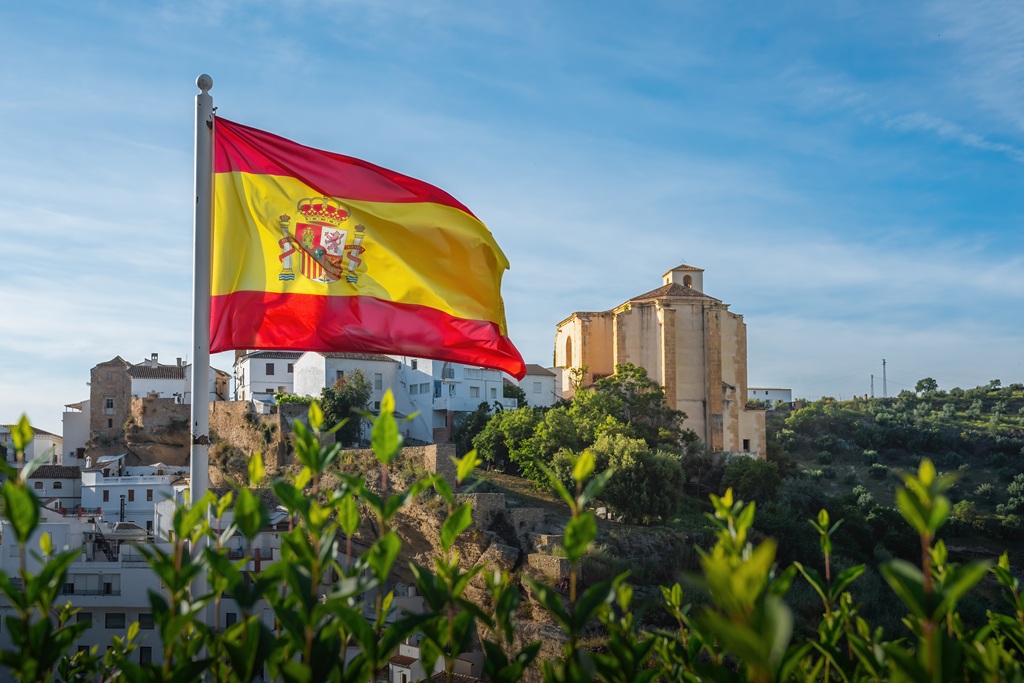
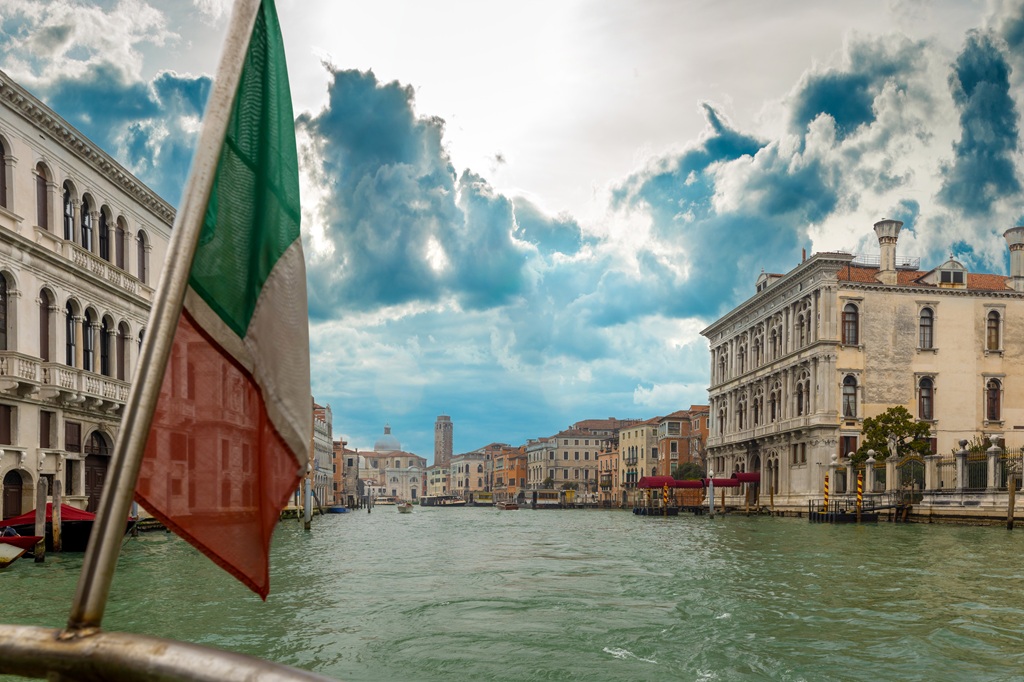
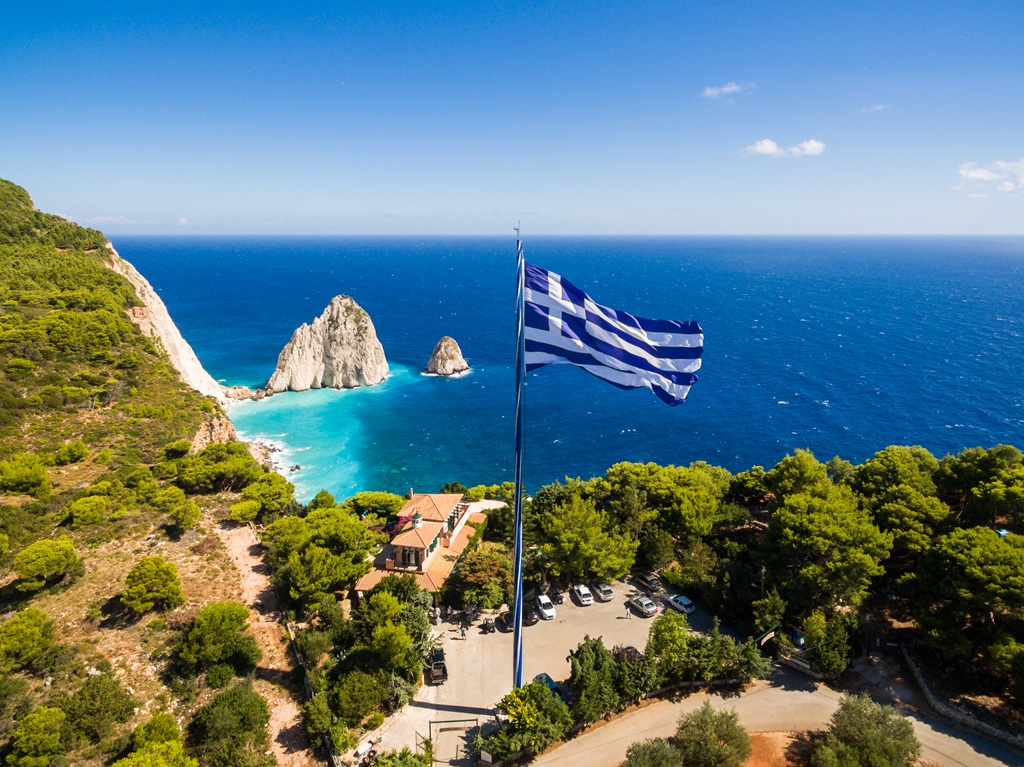
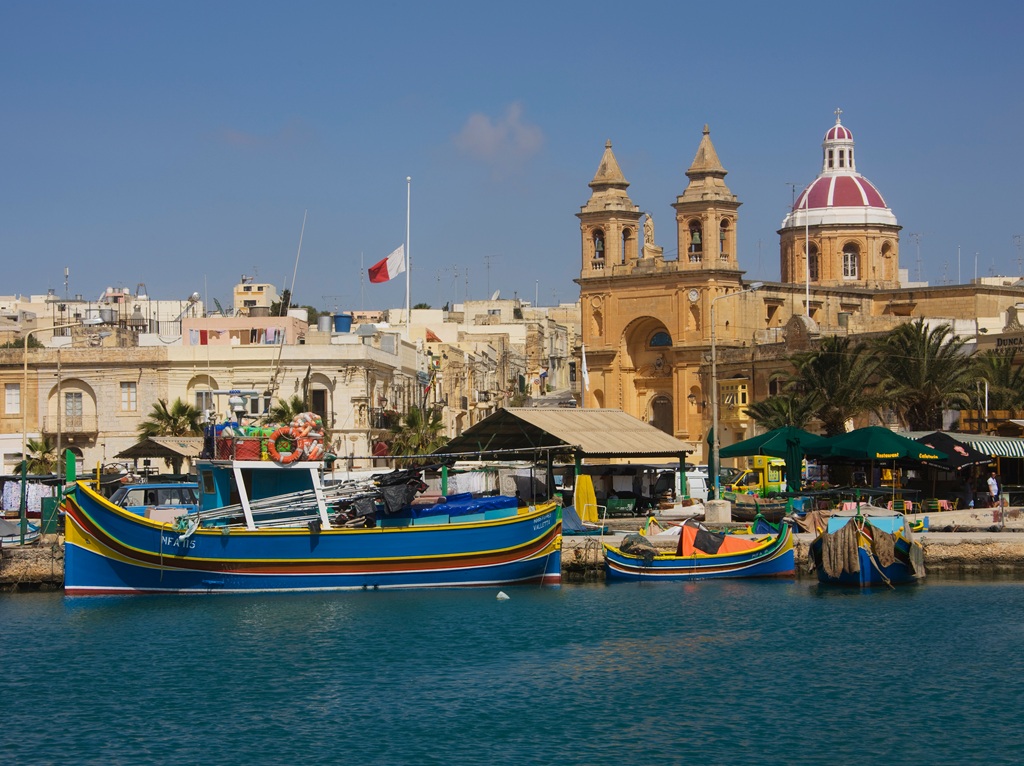
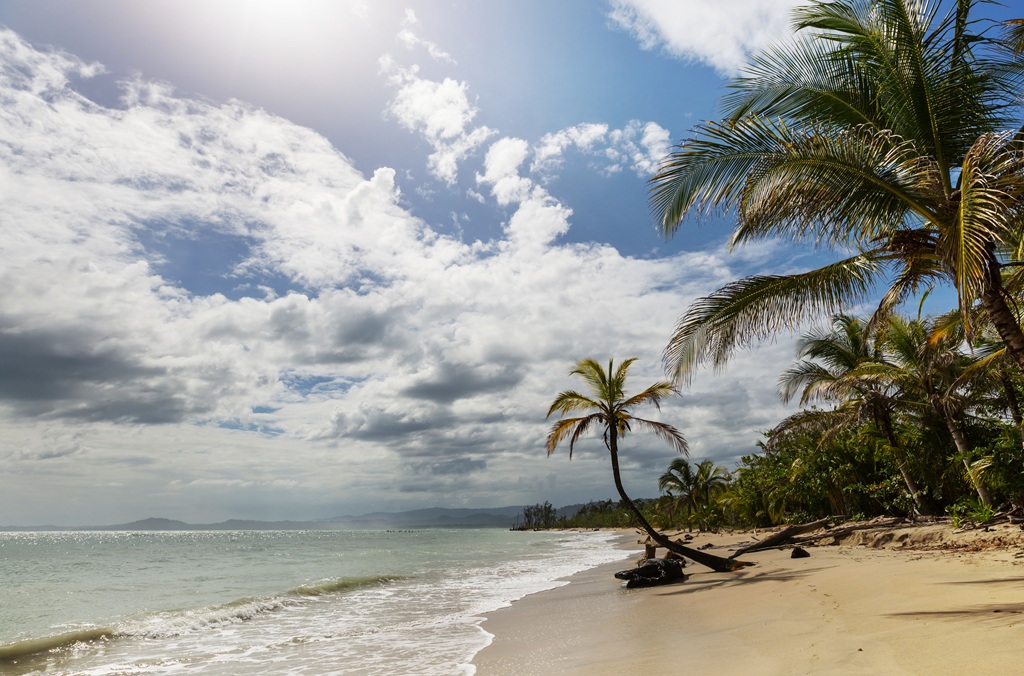
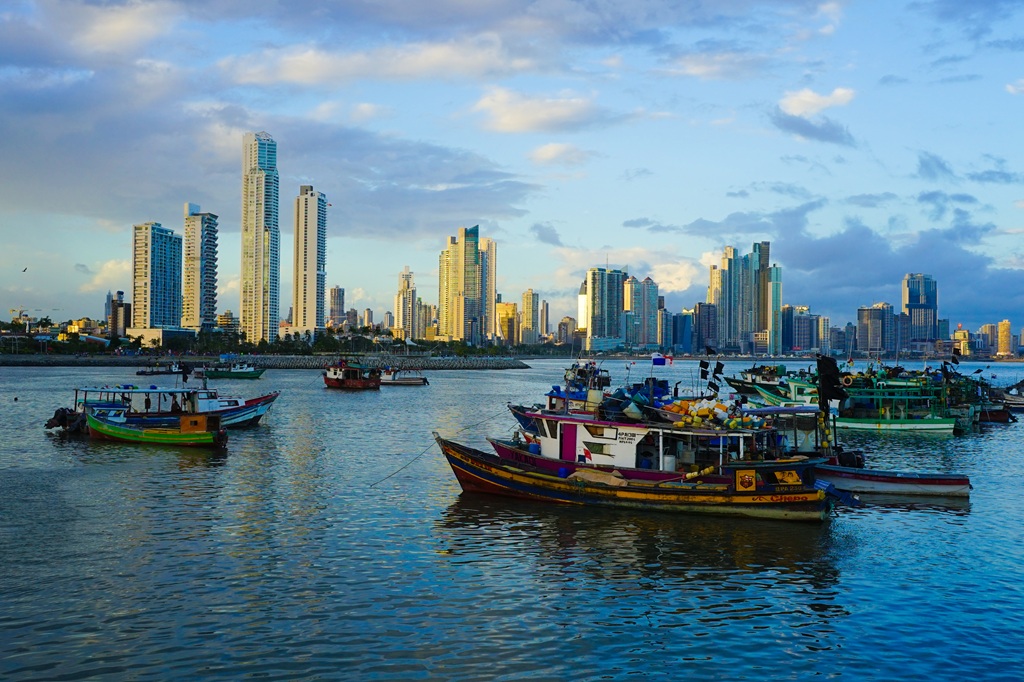


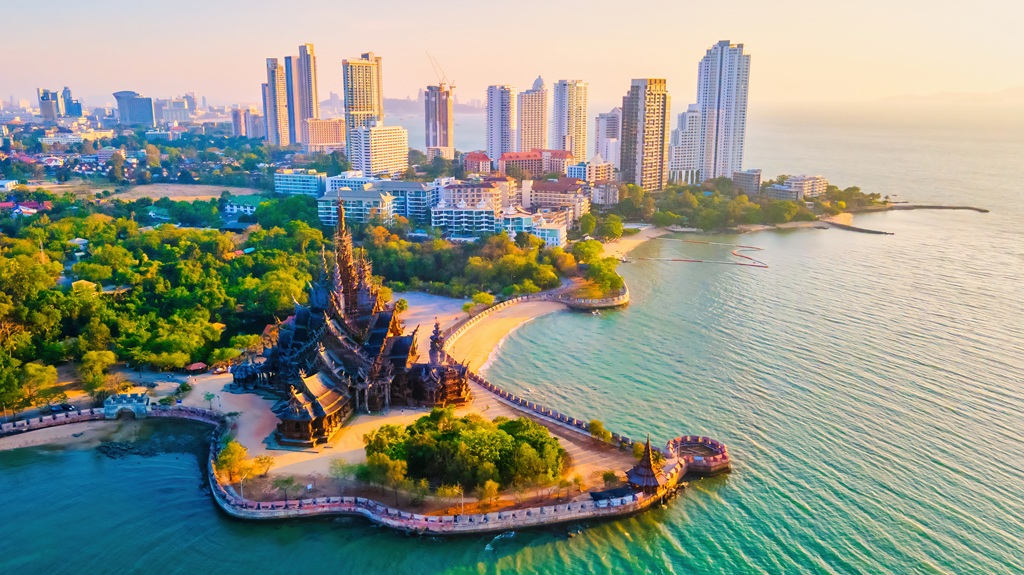







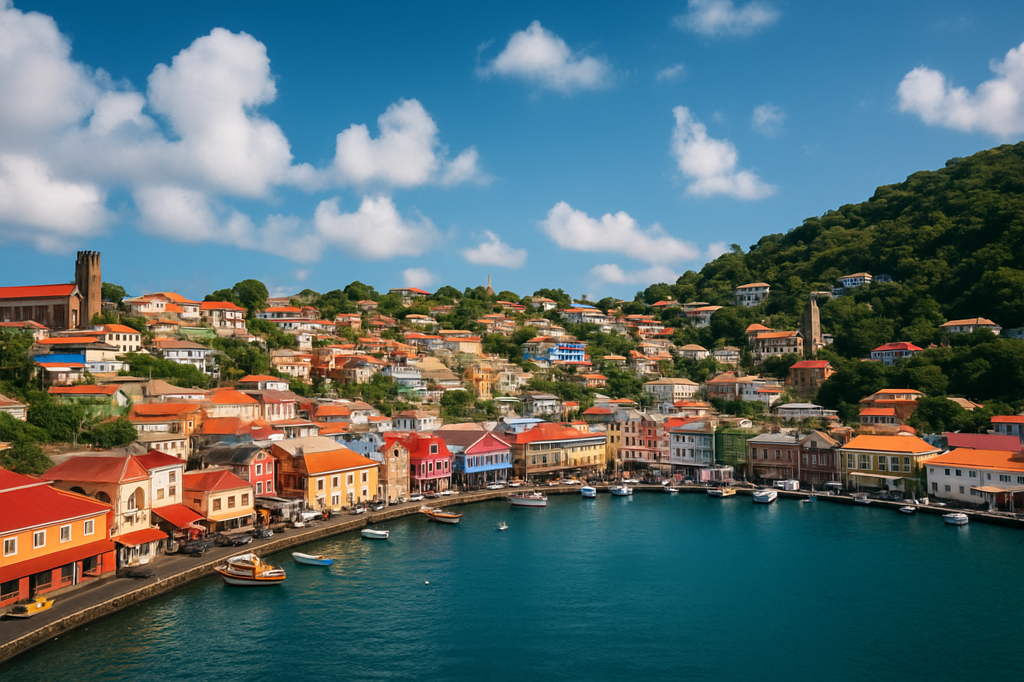


.svg)






